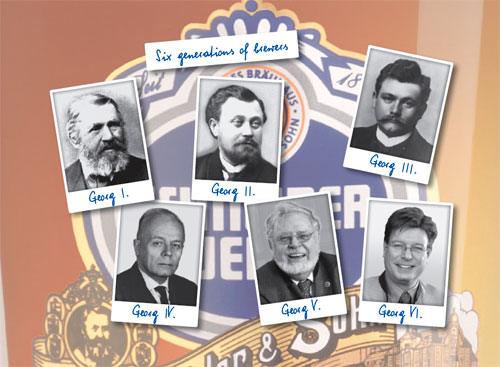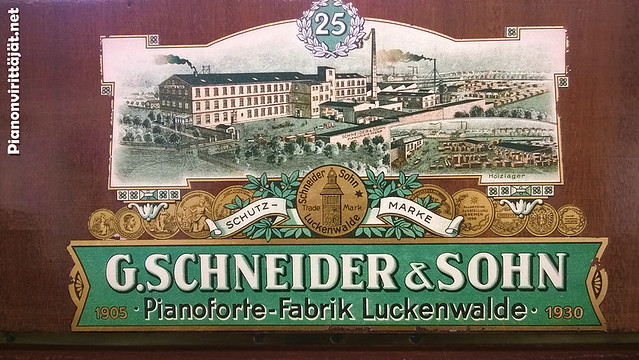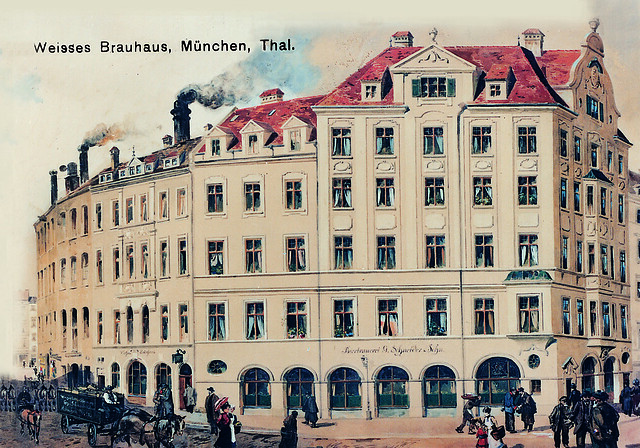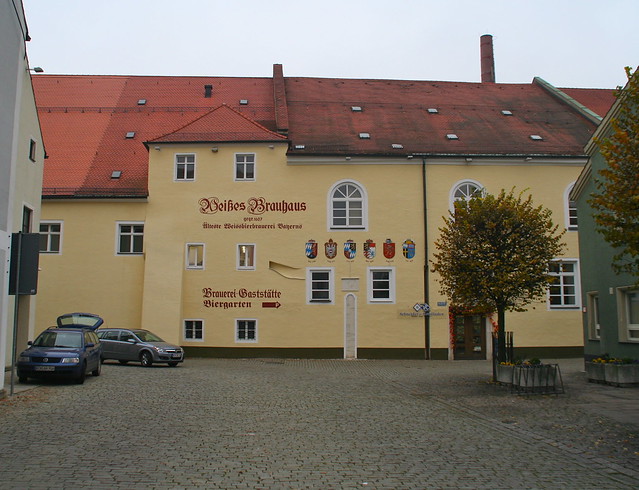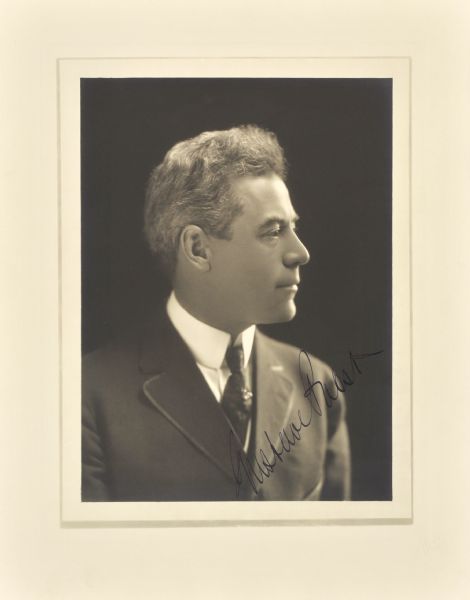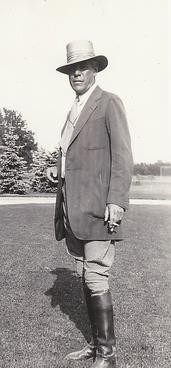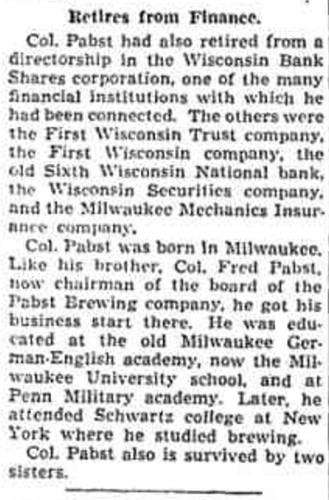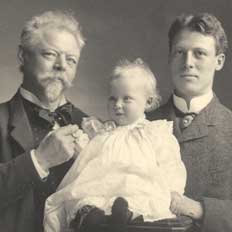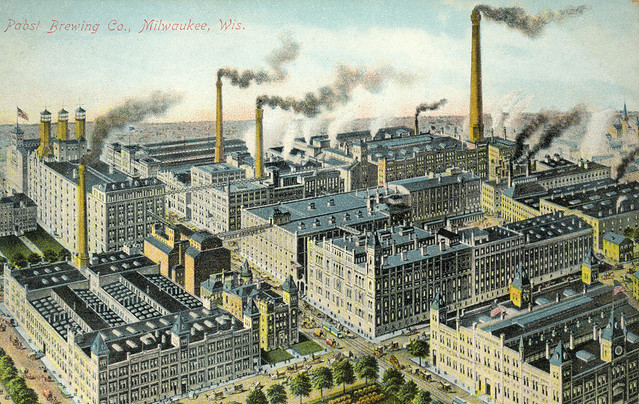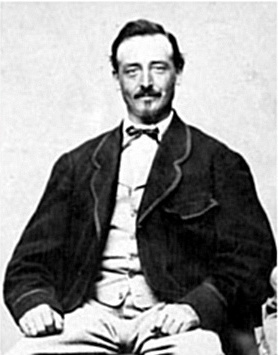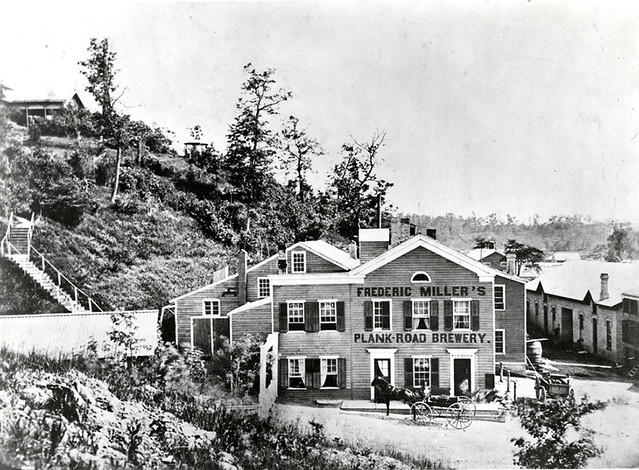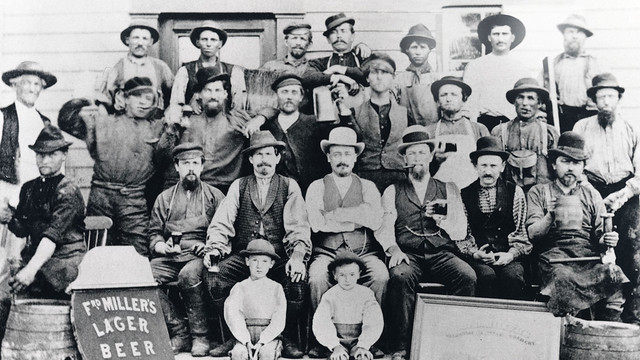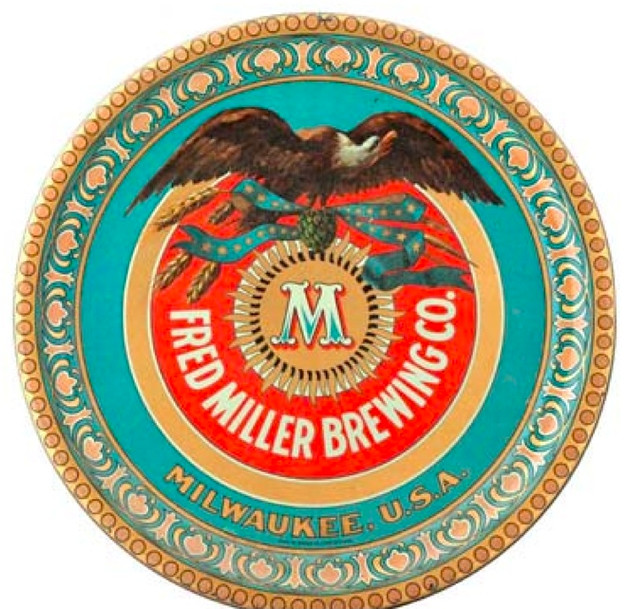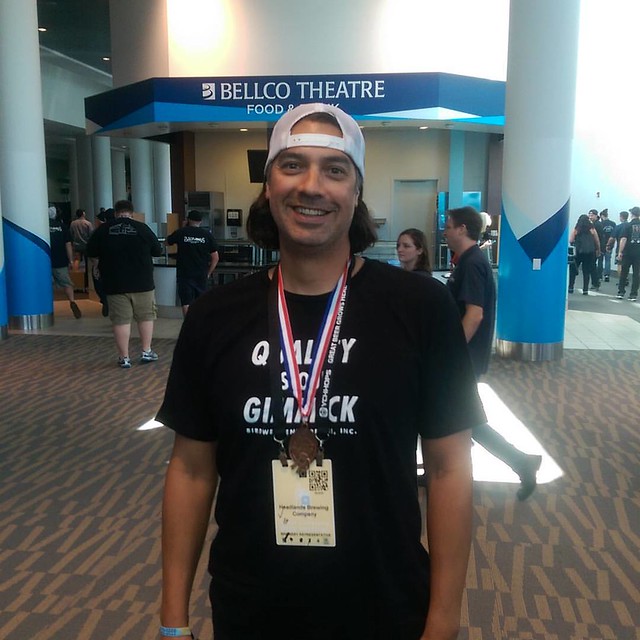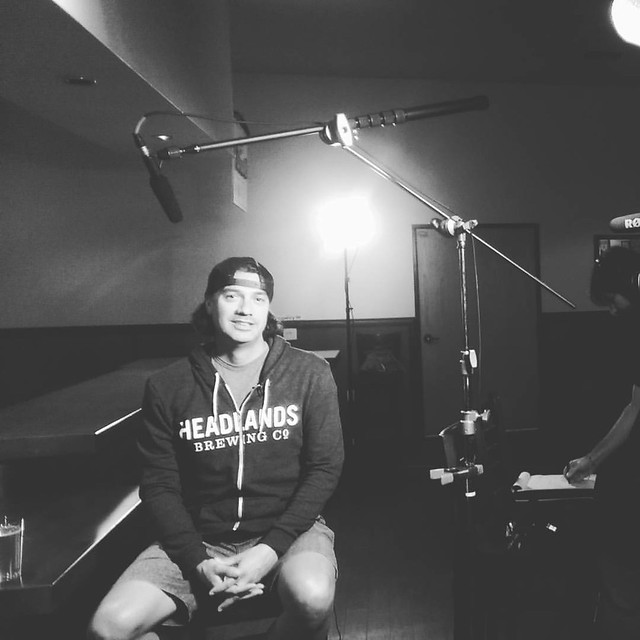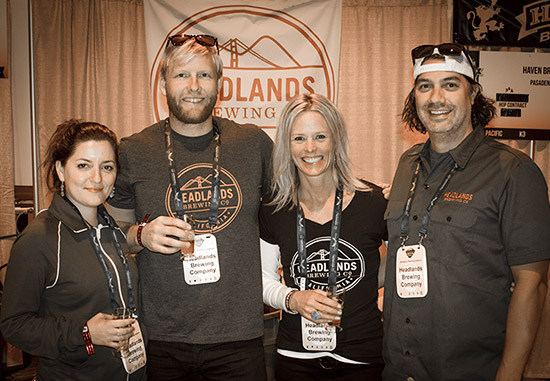
Today is the birthday of Simon E. Bernheimer (November 26, 1849-July 25, 1911). He was born in New York, the son of Emmanuel Bernheimer, who founded the Constanz Brewery, with his partner August Schmid, in 1850, on East 4th Street near Avenue B, and a couple of years later, with a different partner, James Speyers, he started the Lion Brewery on Columbus Ave, between 107th and 108th Streets in Manhattan, next door to the beer garden at the Lion Park, and indeed it is sometimes referred to as the Lion Park Brewery. The business was reorganized in 1868, and his old business partner August Schmid also became a partner in the Lion Brewery, and by 1890 its official name was the Bernheimer & Schmid Brewery, though they continued to trade under the Lion Brewery name. In 1878, Simon took over the business when his father retired. In 1895, it was the sixth-largest brewery in the U.S. After 1903, it was called the Lion Brewery of New York, presumably to avoid confusion with the many other breweries with Lion in their name. Lion survived prohibition but closed for good in 1942.




This is about the brewery from Wikipedia:
Shortly after immigrating to the United States, Swiss-German August Schmid and Emanuel Bernheimer founded the Costanz Brewery at East 4th Street near Avenue B in 1850. The brewery produced a lagered beer, a favorite among German immigrants. By 1852, they built a second Costanz Brewery at Four Corners in Staten Island, home to a large German community. Five years later, Bernheimer became the partner of another German immigrant, James Speyers and founded the Lion Brewery in 1857 in Manhattan Valley.
A group of Catholic Bavarians helped build the Lion Brewery. When it was built, they held masses in the Brewery on Sunday mornings.

At its peak, the Lion Brewery occupied about six square city blocks, from Central Park West to Amsterdam Avenue and from 107th to 109th Street. At the time Manhattan’s Upper West Side was an open area with inexpensive land housing, many public institutions and an insane asylum. There were about five to ten thousand living in shanties after being displaced by the creation of Central Park in 1859. Consequently, with the brewery and surrounding areas, the Upper West Side failed to increase its real estate value until the early twentieth century.
In 1862, a $1 tax on each barrel of beer hurt small brewers but not Lion. The anti-saloon movement in the late 19th and early 20th century encouraged Lion to clean up its own saloons. Lion Brewery got caught up in a wave of mergers and closings among some of the smaller New York Brewers in the early 1940s which continued until 1941, when the business closed. The brewery (including the canning facilities) was auctioned off on August 26, 1943. The plant was demolished in 1944 and more than 3,000 tons of steel were taken from the original brewery structure and recycled for the war effort.
After the Brewery was knocked down the lot was paved over with cinders. On Sundays, after the war, returning World War II Veterans formed a Softball League and played almost every Sunday afternoon. Home plate was located near 107th street and Columbus Avenue. Today, apartment houses occupy the Lion brewery’s former location.
Around 1860, the brewery published a pamphlet titled “Observations on Brewing and Beer: With an Analysis and Scientific Testimony Relative to the Lager Beer of the Speyers’ Lion Brewery.” The pamphlet had a short history of the different kinds of beer, and an analysis showing that their lager beer was pure. The pamphlet also included some great line drawings of the brewery complex.
And here’s another story from Rusty Cans:
In 1850 recent Swiss German immigrants August Schmid and Emanuel Bernheimer founded the Costanz Brewery at East 4th Street near Avenue B. The brewery specialized in lagered beer, a favorites among their fellow immigrants. By 1852, their success encouraged them to build a second Costanz Brewery at Four Corners in Staten Island, then home to a large German immigrant community. Eight years later, Bernheimer became the partner of another German immigrant, James Speyers, in his Lion Brewery, established in 1857.
The Lion Brewery, depicted here, occupied a site bounded by what are now Central Park West and Amsterdam Avenue and extending from 107th to 109th Streets. The background view includes Central Park, with a glimpse of the Blockhouse, a relic from the War of 1812. (The Church of the Ascension is there now, built with the brewery’s help in the 1890s). During this period Manhattan’s Upper West Side was a relatively open area offering inexpensive land and it accommodated numerous public institutions including an insane asylum. Also clustered in the neighborhood were the shanty homes of between 5-10,000 thousand people displaced by the formal opening of Central Park in 1859. The combination of shanties, public institutions, and such foul-smelling industries as breweries explains why the Upper West Side failed to develop the real estate value of other areas bordering Central Park until the early twentieth century.

Late in the life of the Lion Brewery, it became involved in a number of mergers and acquisitions, eventually becoming The Greater New York Brewery, Inc.:
Lion brewing got caught up in a wave of mergers and closing among some of the smaller New York Brewers in the early 1940s. In late 1940, the Fidelio Brewing Co., located at 1st Ave. between 29th and 30th Streets., closed. However, on November 15, 1940, it reopened business as the Greater New York Brewery, Inc. In December 1940, the Greater New York Brewery merged with the Horton Pilsener Brewing Co., which was located at Amsterdam Ave. and 128th Street. Horton Brewing President Alex White became a director of Greater New York Brewery and they continued producing previous Horton products. In January 1941, the Greater New York Brewery merged with City Brewing Corporation of Queens. In February of 1941, Horton, as part of Greater New York Brewery, closed its doors. On April 9, 1941, City Brewing Corporation, as part of Greater New York Brewery, temporarily had its license canceled because of illegal merchandising in the form of gifts to retailers. (It apparently reopened at a later date.)
In May of 1941, Greater New York Brewery, Inc. acquired the Lion Brewery. It was the only brewery of the four that merged that had facilities to package beer in flat top cans. But by February of 1942, the Lion Brewery was closed and put up for sale. There being no buyers, the brewery (including the canning facilities) was auctioned off on August 26, 1943. In 1944 over 3,000 tons of steel were taken from the original brewery structure and recycled for the war effort. In April, 1946, the Greater New York Brewery, Inc. became known as the Greater New York Industries. This entity remained in operation until 1950.
For its short lifetime the former Lion Brewery continued to produce beer in cans labeled as products of the Greater New York Brewery. The two flat tops produced are scarce, but not truly rare. However, during its short life span, the Greater New York Brewery also produced a very rare crowntainer and two rare quarts containing Lion beer and ale. There are only 3 of the Beer quarts known today and the Ale is not much more common. Another rare Lion can, a Lion Pilsner, was produced by Pilsner Brewing in New York in the 1940s, but I do not yet know this company’s relationship to the original Lion Brewing. Today, apartment houses occupy the Lion brewery’s former location.





